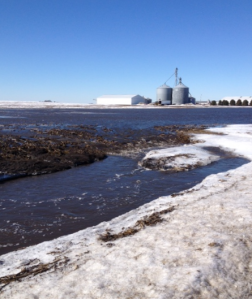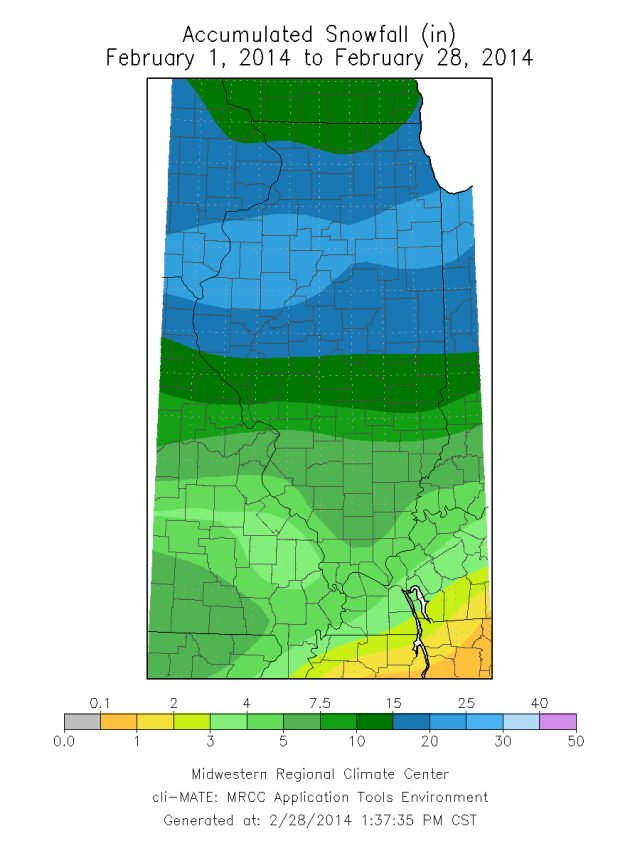
Based on preliminary data, the Illinois statewide temperature for February was 18.7 degrees. That was 12.1 degrees below the long-term average and the seventh coldest February on record. No surprise there.
The statewide average temperature for the three core winter months of December, January, and February was 20.8 degrees. That was 8.2 degrees below average and the fourth coldest December-February period on record. Incidentally, it is in a 3-way tie with 1917-18 and 1976-77. The coldest winter was 1977-78 at 19.6 degrees. The winter of 1978-79 was in second place at 19.9 degrees. Overall, this winter was comparable to those in the late 1970s.
Below is the table of the ten coldest February’s on record for Illinois. It’s really hard to beat those cold February’s in the late 1970s. The 1981-2010 statewide average is 30.8 degrees.
| Rank | Year | Avg. |
| 1 | 1978 | 16.9 |
| 2 | 1979 | 17.5 |
| 3 | 1936 | 17.7 |
| 4 | 1905 | 17.8 |
| 5 | 1895 | 18.1 |
| 6 | 1899 | 18.5 |
| 7 | 2014 | 18.7 |
| 8 | 1902 | 19.3 |
| 9 | 1914 | 20.9 |
| 10 | 1958 | 21.4 |
Here are the ten coldest December-February periods in Illinois since 1895. The 1981-2010 statewide average is 29.0 degrees.
| Rank | Year | Avg. |
| 1 | 1977-1978 | 19.6 |
| 2 | 1978-1979 | 19.9 |
| 3 | 1935-1936 | 20.6 |
| 4 | 1917-1918 | 20.8 |
| 4 | 1976-1977 | 20.8 |
| 4 | 2013-2014 | 20.8 |
| 5 | 1903-1904 | 21.6 |
| 6 | 1962-1963 | 21.9 |
| 6 | 1904-1905 | 21.9 |
| 7 | 1981-1982 | 22.8 |
The snowfall for February was above average across the state. The total snowfall ranged from 4 inches in far southern Illinois to 15-20 inches in north-central Illinois. The snowfall departures from average ranged from 1-5 inches south of Interstate 70 and between 10 and 18 inches between Interstates 70 and 80.
The statewide precipitation for February was 2.28 inches. That was just 0.17 inches above average. Precipitation includes both rain events along with the water content of any snowfall. The result in February was that the above-average snowfall did not translate to above-average precipitation because several of those snowfall events occurred in colder conditions when snow density is lower (i.e, fluffier).
By the way, here are the snowfall totals for the entire snowfall season. You may recall that we saw snow flurries back in October and some measurable snow in November. Some of largest snowfall totals this winter are in the Chicago area and include Lincolnwood with 79.8 inches and Oak Park with 78.6 inches.





